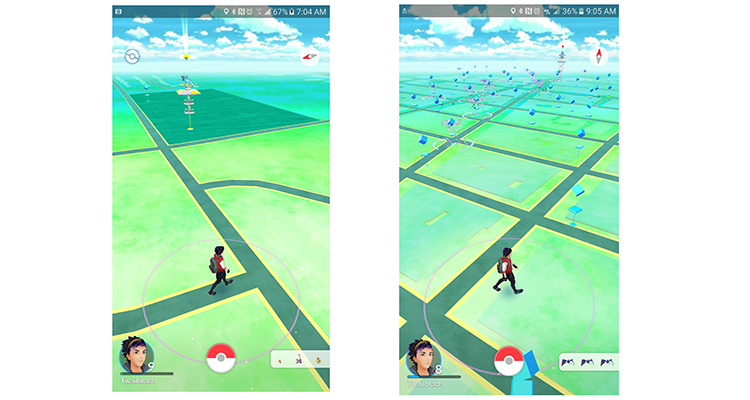Accessibility for Everyone in a Virtual World
 A great deal of digital ink has been spilled on the phenomenon of Pokémon Go, including on these very pages by Gary Kayye, on the AV Power Up! podcast and, of course, by yours truly. There is one more thought which I’d like to share before I wander off to talk about something else, which is that AR games such as Pokémon GO or Ingress can provide a cautionary tale about maintaining consistency of experience, and that we need to be make careful decisions so as not to leave anyone out.
A great deal of digital ink has been spilled on the phenomenon of Pokémon Go, including on these very pages by Gary Kayye, on the AV Power Up! podcast and, of course, by yours truly. There is one more thought which I’d like to share before I wander off to talk about something else, which is that AR games such as Pokémon GO or Ingress can provide a cautionary tale about maintaining consistency of experience, and that we need to be make careful decisions so as not to leave anyone out.
You Have to Get There
As a game, access to Pokémon Go is not the most important thing in the world. As a part of contemporary culture, a lack of access can be profoundly isolating, especially for those interested in gamer subcultures. Who lacks access? First of all and most obviously are those with mobility impairments. Not only is there nothing in the Americans with Disabilities Act about the placement of Pokéstops, there is, to the best of my knowledge, no mechanism for making their placement accessible. Even for those that are within easy reach at level ground, there remains the issue that players are required to physically travel to them. GPS spoofing to virtually move oneself about the world is explicitly forbidden in the terms of service. The result is a barrier to entry for those without the physical ability to perambulate about their environs.
What does this mean to the rest of us? To me it’s a reminder that we need to plan, to build and to design for everyone. Pokémon Go was designed for the majority of able-bodied people with at least a minimal level of physical fitness. While I’d rather there be concessions to those with a lesser level of physical ability it still is, for all the cultural import, “just a game.” There might be some applications which are more important, which aren’t “just games.” I’d still argue that games are important in that cutting people out of them is cutting them away from culture and, in the case of the best experiences, art. As we design experiences, we have to remember that not everyone has the same abilities and we need to keep everything in mind.
Different Experience in Different Places
One striking thing about these AR games is how different the experience is in different environments. Look at the Pokemon maps from midtown Manhattan and from Suburbia; in the latter case, one would have to walk or drive a few miles from game element to game element. In the former, there are literally dozens of Pokestops within a two block radius. This means that the experience of the game is far, far different and far easier in an urban environment.
The Ingress map in Manhattan is similarly busy. It is, on one hand, very easy to find portals to “attack” and even to link portals into little triangles, each of which gives your team points in the game. What’s nigh impossible is getting some of the achievements the game asks for, such as keeping a portal from being captured for a number of days. Those achievements are best sought in less populated and less trafficked areas.
It also means that if you put an AR object in the middle of suburbia you might attract foot traffic from gamers, while if you put one in the middle of a dense city it might be too far lost in the thicket of other objects to be much of a draw.
Remember Those Without Devices
Another VR experience about which I wrote was a mixed VR/live performance of a piece called The Hubble Cantata in Prospect Park, Brooklyn. They handled the lack of broad adoption of VR headsets with the simple solution of handing them out; Google Cardboard provides a very low-cost way to turn a phone into a VR viewer, even if it is one of middling quality. For those without a phone capable of handling that or who couldn’t download the content there was a two-dimensional broadcast of the content onto a more traditional screen. My point here is that while there are many ways in which we can leverage users’ personal devices, it is still possible — and important — to allow some accommodation for those without such devices.
AR and VR are a new frontier, but one in which we’re not all arriving in the same time and the same way. As they are used for more applications we need to be mindful of ways in which we can leave people behind and avoid doing so.





